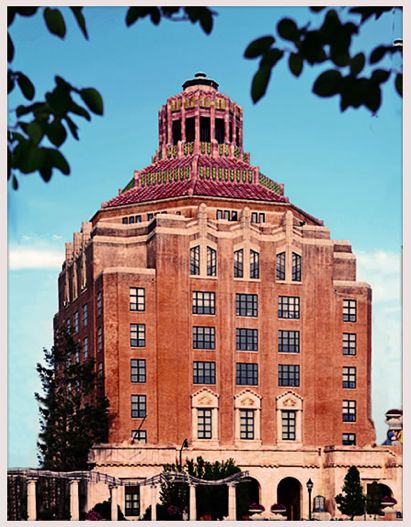For its size, Asheville has had more than its share of famous people. One was Douglas Ellington, an architect who put his lasting mark on Asheville as a master of the Art Deco style.
It was 1926 before Ellington arrived in Asheville to put his permanent stamp on the city’s architectural character. Writing about Ellington’s life, Dale Wayne Slusser wrote, “Douglas D. Ellington was born in 1886 in Clayton, North Carolina to Jesse & Sally Ellington. Ellington attended college at Randolph-Macon College, in Virginia and received his architectural training at Drexel University in Pennsylvania. In 1911 he went to Europe to supplement his education at the Ecole des Beaux-Arts. He completed his studies at the Ecole, just prior to the start of the First World War. After serving in the military in the ‘camouflage unit’ during the War, Ellington returned to civilian life and secured consecutive teaching positions first at Drexel, then Columbia University, and finally at the Carnegie Institute of Technology…”
Asheville was in a building frenzy in the 1920s’ and was just the kind of avant-garde place for the buildings Ellington wanted to design. Unfortunately, Asheville’s building boom ended abruptly with the Great Depression of the early 1930’s. Douglas Ellington was forced to move on and while he continued to return to the city as a visitor, and to oversee the construction of homes he designed for numerous Asheville individuals, he never again took Sky City as his permanent residence. But his impact lives on most notably in the Asheville City Hall pictured above. Considered an Art Deco masterpiece, Ellington sought to capture the contours and textures of the city’s mountain backdrop. He selected materials to match the clay-pink shades of Asheville’s soil. Inside the City Hall, you will find murals by New York artist Clifford Addams portraying stories of Native Americans and early white settlers in the region. Its fanciful nature and embellishments are in tune with whimsical Asheville. Five Ellington designed buildings remain in downtown Asheville as historic architectural landmarks: the Asheville City Hall, S & W Cafeteria, First Baptist Church, Asheville High School, and Merrimon Avenue Fire Station.

The architectural character of Asheville today did benefit from the Depression in one way. The earlier building boom had placed the city deeply in debt forestalling urban renewal projects that took place in many cities following the Depression and later periods—that consequence saved most of Ellington’s masterpieces when many Art Deco buildings were being demolished and replaced by modern glass-walled structures.
Asheville’s architecture is unique not only for the contributions of Ellington but from many other extraordinary architects and builders— including many brought from around the world to create the Biltmore Estate. A must for visitors is the architectural trail through the downtown area of Asheville. For more information go to https://www.exploreasheville.com/architecture-trail/.
